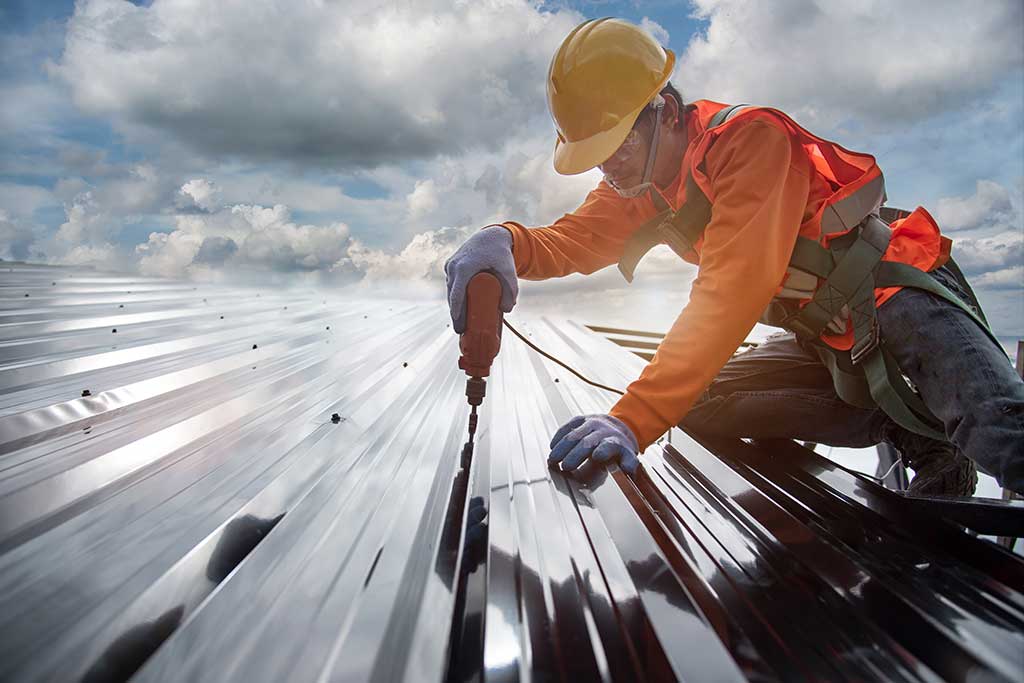A Comprehensive Overview to Effective Roof Covering Apartment Roofing System Setup
The ins and outs of level roofing installation demand a precise method, beginning with a detailed understanding of numerous level roofing kinds and the vital materials required for optimal performance. A successful setup hinges not only on the choice of materials but also on the preparation and execution of each action associated with the process. As we explore the critical points from preparation to upkeep, it comes to be noticeable that overlooking also minor details can substantially affect the roofing's durability and efficiency. What specific approaches can ensure a seamless installation that holds up against the examination of time?
Understanding Apartment Roofing Types
When taking into consideration level roofing systems, it is vital to understand the different kinds readily available, as each offers distinctive advantages and negative aspects tailored to certain needs. One of the most common sorts of flat roofs consist of Built-Up Roofing (BUR), Changed Bitumen, and Single-Ply membranes.
Built-Up Roof contains several layers of asphalt and crushed rock, offering superb resilience and climate resistance. It is particularly valuable in areas prone to severe weather but might need even more upkeep due to its complex construction.
Changed Asphalt is a prominent option for its convenience of installation and adaptability. It frequently utilizes a torch-applied or self-adhesive method, which can be beneficial for quick repair services and long-term efficiency. Nonetheless, its life expectancy can be shorter compared to BUR.
Single-Ply membrane layers, including Thermoplastic Olefin (TPO) and Ethylene Propylene Diene Monomer (EPDM), are acknowledged for their light-weight nature and power performance. These products are frequently favored for commercial buildings due to their cost-effectiveness and simplicity of setup (Cleveland Roofing Specialists). They might not provide the same degree of insulation as various other alternatives.
Each roof type needs cautious consideration based on climate, spending plan, and specific project requirements.
Important Products for Flat Roofing
A range of crucial materials are important for the successful setup of flat roofing systems. The option of products directly impacts resilience, performance, and general performance.
Among the main materials is the roofing membrane layer, which can be constructed from different substances such as polycarbonate polyolefin (TPO), ethylene propylene diene monomer (EPDM), or PVC. Each kind uses unique advantages, consisting of UV resistance and adaptability, which are vital for prolonged efficiency.
In addition to the membrane layer, insulation materials play a significant function in energy performance. Stiff foam boards or polyisocyanurate insulation are preferred choices, as they give exceptional thermal resistance and wetness management.
In addition, roof adhesives and sealants are important for ensuring a water tight setup. These products need to be compatible with the chosen membrane layer to stop damage in time.
Planning For Setup
Correct prep work is necessary for a successful flat roofing system installation, as it lays the groundwork for a effective and long lasting roof covering system. Begin by carrying out a thorough evaluation of the existing roofing framework.
Following, collect all required tools and products, ensuring that they meet market criteria. This consists of waterproof membrane layers, insulation, blinking, and bolts. Acquaint yourself with the manufacturer's specs, as adherence to these standards is vital for guarantee functions.
Furthermore, ensure that the job location is clear of debris and blockages to promote effective and risk-free setup. Think about weather; stay clear of installment throughout heavy rainfall or severe temperature levels, which can influence product efficiency. Inform any kind of occupants of the structure concerning the future work to guarantee security and lessen interruptions. By taking these preparatory steps, you can boost the probability of an effective level roof covering installment that satisfies both structural and visual requirements.
Step-by-Step Setup Refine
With the foundation developed via complete preparation, the next stage involves executing the level roofing system installment methodically. This step is critical for keeping the roof's honesty over time.
Following the vapor obstacle installment, put down insulation boards, ensuring they fit snugly with each other to reduce thermal connecting. Secure the insulation with ideal fasteners based on the roofing kind and local building ordinance. Once the insulation is in location, it's time to use the roofing membrane. Relying on the chosen product-- such as TPO, EPDM, or modified bitumen-- install the membrane according to the manufacturer's specs.
Mount blinking around boundaries, vents, and any kind of roofing penetrations to boost waterproofing. After installation, perform a detailed evaluation to identify any type of prospective issues prior to wrapping up the project, making certain a reliable and robust level roofing system.
Maintenance Tips for Longevity
Regular upkeep is vital to make sure the longevity and performance of a level roofing system. Among the main tasks is to perform routine examinations at the very least twice a year, preferably in spring and fall. Throughout these evaluations, seek indications of wear, such as blisters, splits, or merging water, which check this site out can indicate underlying problems.

Ensuring proper drain is crucial to avoid water buildup. Check and clear gutters, downspouts, and scuppers to ensure unhampered water flow. Furthermore, check seals around vents, skylights, and various other infiltrations for any signs of wear and tear, using caulk or sealer as read what he said required to maintain a watertight barrier.
Last but not least, consider expert maintenance solutions every couple of years for thorough maintenances. By sticking to these maintenance ideas, you can substantially expand the life of your level roof, check out this site ensuring it remains a dependable shield against the components.
Verdict
Effective level roofing system installation requires a systematic method incorporating complete evaluations, product choice, and careful preparation. Sticking to the described actions during the installment process makes sure the appropriate application of roof covering membrane layers and insulation while improving waterproofing through efficient blinking setup.
The details of flat roof covering installation need a precise approach, starting with a detailed understanding of numerous flat roofing kinds and the necessary materials required for optimal performance.Proper preparation is important for an effective level roofing system setup, as it lays the foundation for a long lasting and efficient roofing system. After setup, perform a detailed evaluation to determine any kind of potential issues before wrapping up the task, guaranteeing a durable and trusted flat roof covering system.

 Luke Perry Then & Now!
Luke Perry Then & Now! Marla Sokoloff Then & Now!
Marla Sokoloff Then & Now! Talia Balsam Then & Now!
Talia Balsam Then & Now! Bill Cosby Then & Now!
Bill Cosby Then & Now! Bernadette Peters Then & Now!
Bernadette Peters Then & Now!